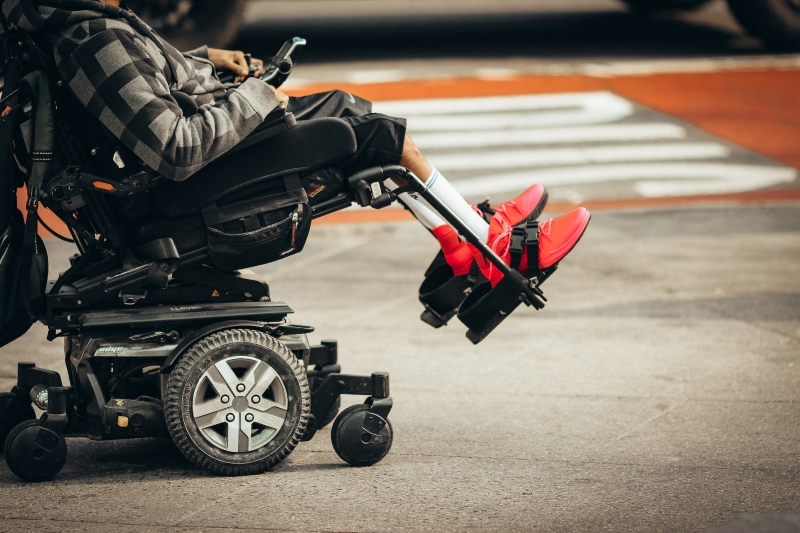The Intersection of Disability and Poverty in Indonesia
 Disability and poverty are critical issues that intersect, presenting complex challenges for individuals and societies worldwide. In Indonesia, this intersection is particularly prominent. The following is an exploration of the issue of disability and poverty in Indonesia, highlighting its causes, consequences and potential solutions.
Disability and poverty are critical issues that intersect, presenting complex challenges for individuals and societies worldwide. In Indonesia, this intersection is particularly prominent. The following is an exploration of the issue of disability and poverty in Indonesia, highlighting its causes, consequences and potential solutions.
Unraveling the Complex Relationship Between Disability and Poverty
Understanding the dynamic relationship between disability and poverty in Indonesia and globally requires a comprehensive examination of the various factors at play. Disability significantly increases the risk of experiencing poverty. According to the World Bank, the poverty rate in Indonesia stood at 20% in 2022 based on the poverty line of $3.65 per person per day.
Additionally, in March 2019, the National Socio-Economic Survey concluded that “more than 9% (23 million) of Indonesia’s population have a disability.”
Individuals with disabilities often face barriers that hinder their access to education, employment and social protection. Limited access to quality education perpetuates a cycle of disadvantage, inhibiting skill development and reducing economic empowerment opportunities. Discrimination and prejudice in the job market exacerbate these challenges, resulting in higher unemployment rates and lower wages for individuals with disabilities. Many public places and infrastructures in Indonesia lack the proper accessibility features for individuals with disabilities. This makes it very difficult for these individuals to navigate and participate fully in society.
Moreover, the lack of tailored social protection programs leaves them more vulnerable to economic hardships. Conversely, poverty can contribute to a higher likelihood of disability due to inadequate health care, unsafe working conditions, and limited access to necessary support services. The intersection of disability and poverty creates a complex web of challenges that necessitates a comprehensive and multi-pronged approach to address the underlying causes and alleviate their impact on individuals and communities.
Examining Government Initiatives on Disability and Poverty
The Indonesian government has enacted several notable laws and regulations to protect the rights of persons with disabilities in Indonesia. Act No. 4 of 1997 emphasizes equality and non-discrimination, outlining rights related to education, employment, accessibility, rehabilitation and social welfare. Law No. 23 of 2002 addresses explicitly child protection, including the right to education and social integration for children with disabilities.
Law No. 11 of 2009 focuses on social welfare, recognizing persons with disabilities as members of society facing challenges and social dysfunction. While these laws provide a foundation for promoting equality, it appears that continual evaluation, improvement and allocation of resources are necessary to ensure effective implementation and sustainable impact.
NGOs’ Role in Addressing Disability and Poverty
NGOs play a pivotal role in addressing the challenges that individuals with disabilities face living in poverty in Indonesia. These organizations are instrumental in promoting social inclusion, providing support services and advocating for the rights of persons with disabilities. Through a range of initiatives, NGOs actively contribute to improving the lives of this marginalized population.
One exemplary NGO working to help disabled people in Indonesia is Yayasan Mitra Netra (YMN), which focuses on supporting individuals with visual impairments. YMN’s efforts are centered on empowering visually impaired individuals through education, vocational training and job placement.
Among many, there are a couple of YMN’s accomplishments that stand out, such as the Braille mathematics books that use special symbols, as well as initiating the development of an electronic dictionary. During the first years of its work in the 1990s, the YMN was the first organization to provide computer courses for blind people, and in 1992, the organization also built an online library, providing access to books to people throughout Indonesia.
Another notable NGO is the YCAB Foundation which focuses on improving the lives of people with physical disabilities in Indonesia through education, skills training and economic empowerment programs. One of their flagship initiatives is the “Mobile Learning Center,” a mobile unit that brings education and training directly to communities, particularly in remote areas. This program focuses on providing accessible education for children and young adults who face barriers to accessing traditional schools. The Mobile Learning Center offers a range of educational activities tailored to the specific needs of individuals with physical disabilities.
By bringing education to their doorstep, YCAB Foundation ensures that these individuals have the opportunity to develop essential skills and knowledge, enhancing their prospects for employment and economic independence.
Making Efforts
Addressing the intersection of disability and poverty in Indonesia requires a multifaceted approach that includes government initiatives and the important role of NGOs. Laws and regulations provide a foundation for promoting equality, but ongoing evaluation and resource allocation is crucial for effective implementation. NGOs like Yayasan Mitra Netra and the YCAB Foundation make significant contributions to empowering individuals with disabilities through education, vocational training and economic empowerment programs. By working together, stakeholders can create a more inclusive society that ensures equal opportunities and improved quality of life for all Indonesians with disabilities.
– Betsy Watters
Photo: Unsplash
